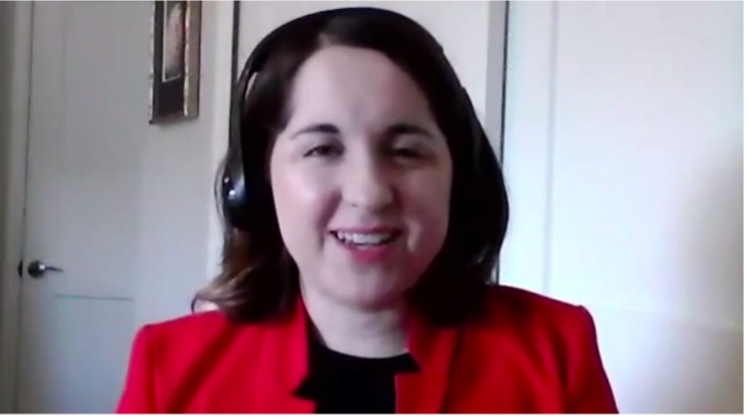May 26, 2021 | Marilyn P. Arnone, co-PI, Project ENABLE
Sometimes, getting started on incorporating Universal Design and Universal Design for Learning principles into library facilities and into the programs and services for library patrons can be overwhelming. So, the Project ENABLE team reached out to its community, libraries, to learn about some of the creative and successful ways library staff are meeting these challenges, making their library spaces more accessible, and creating programming and services that are more inclusive for their patrons with disabilities. We found a variety of librarians, working in public, school and academic libraries located throughout the country, who were accomplishing a lot, often with very little or no funding and willing to share their ideas and results with the entire library community.
We have created a “challenge video” series of interviews with 13 resourceful librarians, who wished to share their stories with their colleagues through our national web-based training sessions in partnership with Infopeople and through our Resources database on the Project ENABLE website, where they are freely accessible to all librarians to view. Below is a brief introduction to one of those librarians, Renee Grassi, Youth Services Manager at the Dakota County (Minnesota) Library, who described in her video interview how she found an affordable solution to her challenge.
Where to Begin
Many public l ibraries, especially in rural areas, want to do more but are strapped, financially, to do so. Where do they start? Several of the librarians we interviewed said they started by reaching out to experts in their communities. Renee reached out to the special education department of her local school district as the first way to help her better understand the various facets of problems and the different stakeholders the library serves. The special education teachers were extremely generous with their time as they offered suggestions for how the library could be more inclusive, even inviting her to observe their classes. She also found other community disability organizations and considered them as part of her outreach. She garnered numerous strategies for supporting positive behaviors. She spoke with these experts about wording, communications strategies, and more.
ibraries, especially in rural areas, want to do more but are strapped, financially, to do so. Where do they start? Several of the librarians we interviewed said they started by reaching out to experts in their communities. Renee reached out to the special education department of her local school district as the first way to help her better understand the various facets of problems and the different stakeholders the library serves. The special education teachers were extremely generous with their time as they offered suggestions for how the library could be more inclusive, even inviting her to observe their classes. She also found other community disability organizations and considered them as part of her outreach. She garnered numerous strategies for supporting positive behaviors. She spoke with these experts about wording, communications strategies, and more.
One organization, staffed by persons with disabilities, had individuals come to the library to work with library staff and help them practice ways of handling different situations that could improve the library experience of someone with a disability. One such practice session included helping a blind person navigate the stacks. Much of what she learned would involve little or no cost to implement. Getting educated about what can be done is the first step. “The only way to do better is to learn and to keep an open mind,” says Renee.
You can see the full interview with Renee Grassi, and many more video interviews on the Project ENABLE website (https://projectenable.syr.edu) Just click on the Resources tab and choose Videos under the Format pull-down menu.
How to Use the Videos in the Collection
There are two videos for each of the 13 librarians interviewed. The first video (Part 1: “The Challenge”) introduces the problem faced by the library and the second video presents how that librarian solved the challenge (Part 2: “A Solution”). The reason it is called A Solution is that there are always many solutions to a problem, depending on the context. There are a number of ways in which you might want to use Our Challenge Videos.
This video collection can be used by librarians as part of in-house training sessions for their library staff, by professional training programs for librarians, or by an individual librarian wanting to learn how to solve a particular problem. If used in training, the Part I challenge video can be presented first, followed by a discussion with participants brainstorming their ideas for solving the challenge. When all ideas have been proposed, the trainer can then reveal the strategy the librarian in the video had used in the Part II video, again emphasizing that it was just one of many potentially successful solutions.
All of the 13 challenges featured in the videos present a common problem librarians face when trying to make their libraries more accessible and inclusive, such as how to give patrons with disabilities a voice in making decisions about the programs and services offered to them, tips and tricks for applying Universal Design guidelines or Universal Design for Learning principles to various library programs and services, especially for librarians with small budgets and limited resources, and ways to navigate prevalent misconceptions, taboos and stereotypes related to people with disabilities.
The Challenge and Solution videos described in this article were produced by Syracuse University’s Center for Digital Literacy, as part of an IMLS-funded Laura Bush 21st grant, in partnership with InfoPeople/Califa. The videos are also cited as resources for our workshop designs in the area of libraries and disabilities that will be freely available to libraries on this site, starting this summer. These workshops can be customized to use with a particular audience within a library, school or library system. We are excited to offer these innovative and important resources to all.